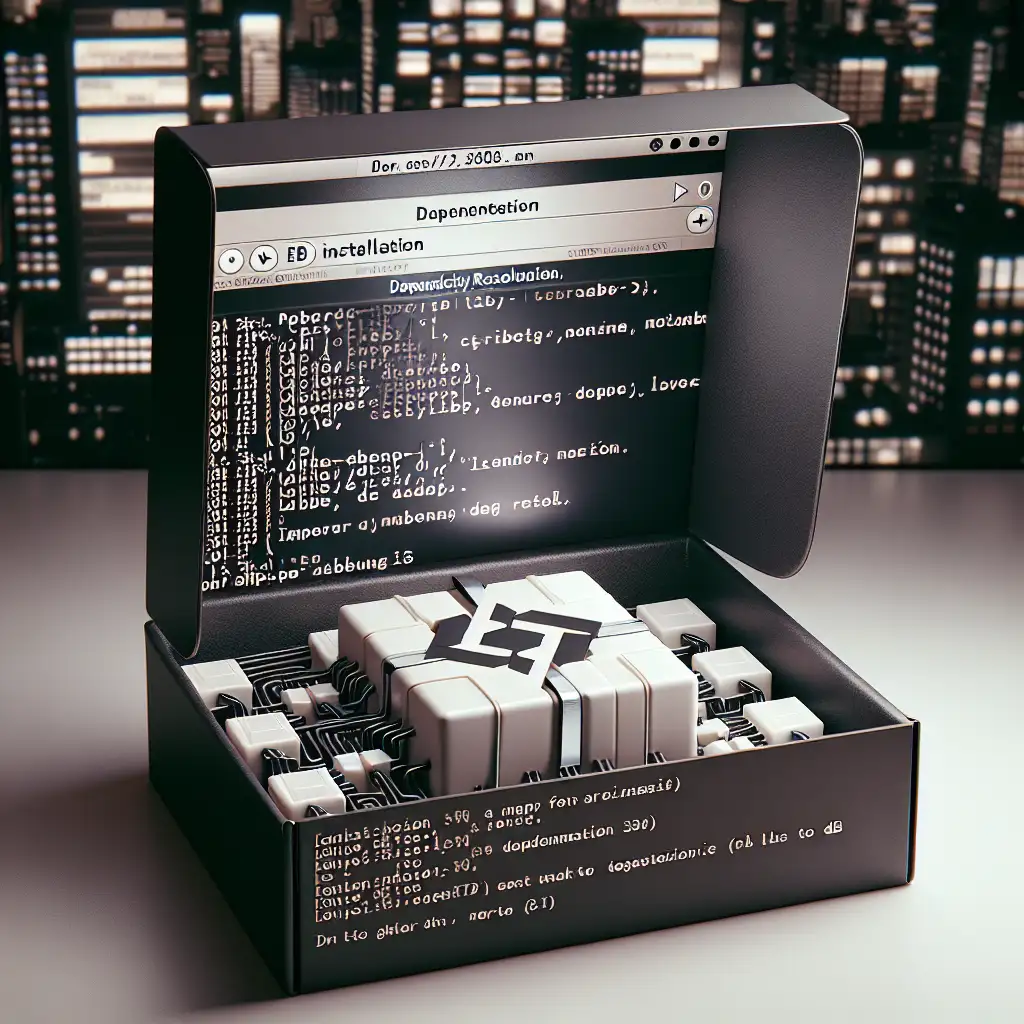Mastering DEB Installation on Linux: Beyond Simple Commands
Installing DEB packages is foundational for managing software on Debian-based Linux systems such as Ubuntu, Debian itself, Linux Mint, and others. However, many users — especially those new to Linux or managing multiple machines — treat installation as a mere copy-paste step using the classic dpkg -i command, not realizing this approach often leads to frustrating dependency issues and wasted time.
Forget blindly using dpkg -i; this guide dives into smarter installation strategies, dependency handling, and best practices that founders and sysadmins rely on to maintain robust Linux environments.
Why Focus on DEB Installation?
A .deb file is a software package tailored for Debian's package management system. While graphical software centers make installation easy for many packages, there are plenty of times you'll download a .deb directly from a vendor or third-party repository — especially for proprietary or niche software.
At first glance, installing a .deb file looks simple:
sudo dpkg -i package-name.deb
But what happens when you get dependency errors? Or when your system ends up partially configured? Knowing more reliable and safe ways to handle DEB installation can save headaches, time, and prevent broken systems.
1. The Pitfalls of Using dpkg -i Alone
dpkg is the low-level tool that installs .deb files but doesn’t resolve dependencies automatically.
Common problem:
$ sudo dpkg -i myapp.deb
Selecting previously unselected package myapp.
(Reading database ... 150000 files and directories currently installed.)
Preparing to unpack myapp.deb ...
Unpacking myapp (1.2.3-1) ...
dpkg: dependency problems prevent configuration of myapp:
myapp depends on libfoo (>= 1.0); however:
Package libfoo is not installed.
dpkg: error processing package myapp (--install):
dependency problems - leaving unconfigured
Errors were encountered while processing:
myapp
As you can see, the install fails because libfoo wasn’t already installed, showing how dpkg doesn’t fetch or install dependencies for you.
2. Smarter Installation With apt
The APT (apt, apt-get) toolchain wraps around dpkg, adding automatic dependency resolution and fetching missing packages from repositories configured on your system.
Safe way #1: Install .deb via APT file install
Since around Ubuntu 16.04 and Debian Stretch, you can actually ask APT to install local .deb packages:
sudo apt install ./myapp.deb
Note the relative or absolute path prefix (./) tells APT this is a local file.
What happens here?
- APT checks the dependencies declared inside
myapp.deb. - If missing dependencies exist in repositories your system knows about, it fetches them automatically.
- This ensures you get a clean install without broken package states.
Why use this over just `dpkg -i?
Because it intelligently ensures all needed packages are fetched from official sources or PPAs you have configured — no manual chasing required.
3. When Network Isn’t Available: Use gdebi
If you’re installing on an air-gapped machine—or one without fully configured repos—there’s another handy tool called gdebi.
Gdebi reads the .deb file metadata and tries to fetch dependencies separately before installing:
sudo apt update
sudo apt install gdebi-core # install gdebi if not already present
sudo gdebi myapp.deb
Advantages:
- It’s smart about dependencies like APT.
- Provides cleaner output than dpkg.
- Prompts you with what will be installed before proceeding.
4. Managing Partial or Failed Installs
If a package install gets stuck in a half-configured state (common with manual dpkg installs), here’s what you do:
sudo apt --fix-broken install
This command tells APT to attempt fixing broken dependencies by installing missing packages or removing conflicting leftovers.
You can also try:
sudo dpkg --configure -a
This configures all unpacked but unconfigured packages to restore consistency.
5. Pro Tips for Package Installers
-
Use absolute or relative path with apt: Always specify local files carefully (
./package.deb). If you just runapt install package.debwithout path prefix, it will try to search repos for “package.deb”. -
Verify package authenticity: If downloading
.debs from unknown sources, consider verifying GPG signatures or hashes. -
Clean cache occasionally: Keep disk usage manageable by running:
sudo apt clean -
Avoid force flags unless necessary: Commands like
dpkg --force-all -ican break system stability and should only be used as last resorts. -
Use version control tools: Tools like
aptitudeoffer helpful UI options for resolving tricky dependency conflicts interactively.
Bonus: Automating Bulk DEB Installation
If you manage multiple DEB downloads—like a downloaded SDK with several components—batch scripting helps:
for debfile in ~/Downloads/*.deb; do
sudo apt install ./"$debfile"
done
This loop installs each DEB file with full dependency resolution handled by APT neatly.
Summary Checklist: Installing DEB Packages like a Pro
| Step | Command / Tool | Notes |
|---|---|---|
| Basic unpack/install | sudo dpkg -i package.deb | Doesn’t resolve deps |
| Dependency-safe local install | sudo apt install ./package.deb | Preferred method |
| Air-gapped + dependency helper | sudo gdebi package.deb | Lightweight alternative if available |
| Repair broken installs | sudo apt --fix-broken install | Recover system stability |
| Configure unpacked packages | sudo dpkg --configure -a | Completes setups stuck mid-installation |
| Batch installs | Bash loop + apt | Automate multi-file installs |
Final Thoughts
Mastering DEB installation goes beyond running a single command—it’s about understanding how these commands interact with system dependencies and package states. Embracing tools like APT's ability to resolve dependencies, knowing how to troubleshoot broken installs, and safely automating installations save valuable time and keep your Linux environment stable and secure.
The next time you grab a .deb, think smart: skip blindly running raw dpkg command and instead leverage the richer tooling available in your Debian-based Linux distribution for clean installs every time! Your future self—and your sysadmins—will thank you.
Did this practical guide help clarify best practices around DEB installation? Feel free to share your questions or tips in the comments below!
